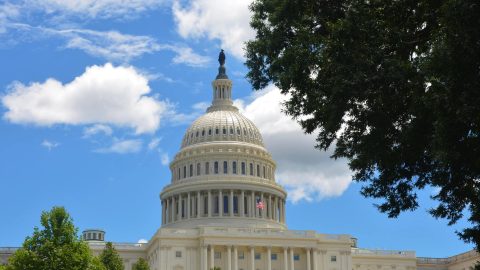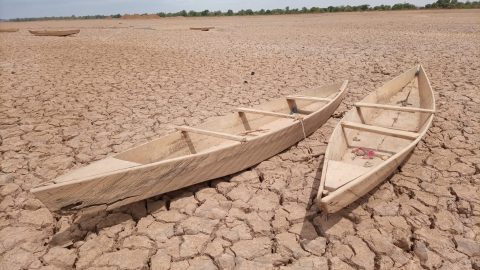From the coldest winter in Beijing’s recorded history to the storm in Texas that surprised the world – extreme weather phenomena remind us again and again of the invasion of climate change into our daily routine. Climate risk can no longer be ignored and has to be taken into account in asset management as well.
Sustainable Finance Disclosure Regulation (SFDR)
In reaction to sustainable risks in the investment in financial instruments, the Regulation (EU) 2019/2088 of the European Parliament and of the Council of 27 November 2019 on sustainability‐related disclosures in the financial services sector came into effect on 10 March 2021 (https://blog.en.erste-am.com/eu-sustainable-finance-disclosure-regulation-and-its-impact-on-asset-managers). The sustainability risk does not only include the increasingly more apparent climate crisis, but also every “environmental, social or governance event or condition that, if it occurs, could cause a negative material impact on the value of the investment”.
The SFDR aims at promoting the integration of sustainability risk management in investment decisions, at reducing the sustainability risk of financial products at standardising the disclosure, and at improving the transparency and comparability of sustainable financial products.
Two phases of implementation
The implementation comes in two phases. The first phase requires the principle-based disclosure from 10 March 2021 until the beginning of the second phase, the date of which has not yet been set. During this period, it is up to the asset managers to set the disclosure format. The investors can choose from several channels in order to learn about the way sustainability risks are being taken into account and controlled.
First, on the website. Corporate guidelines on sustainability risk management and the fee structures of fund managers in connection with sustainable investments are available on the website of the respective asset manager. Second, in the prospectus. For financial products that are categorised as promoting “environmental or social characteristics” or as sustainable investments, investors can find investment strategies in the prospectus in order to achieve such goals. Third, regular reports. The efforts aimed at achieving the sustainability goals can be found in regular reports, for example in the annual report of an investment fund.
In the second phase, which is scheduled to start on 1 January 2022 <” In der zweiten Phase, die ab dem 1. Januar 2022 beginnen soll” – weiter oben: “Die erste Phase erfordert eine prinzipienbasierte Offenlegung vom 10. März 2021 bis zum Beginn der zweiten Phase, deren Datum noch nicht festgelegt ist.“ ?>, the disclosure has to comply with the Regulatory Technical Standards (RTS), i.e. a secondary measure of the SFDR. The relevant disclosure has to be based on designated templates and standardised metrics. In particular, a so-called Principal Adverse Impact Statement (PAI) can be used in order to report on an annual basis once this has been decided. In accordance with the draft RTS, a declaration from the asset manager on the most important disadvantageous effects is supposed to provide the investors with a quantitative and qualitative overview of the aggregated, negative effects of investors that contains 16 obligatory performance indicators in the field of environmental and social aspects (including greenhouse gas emissions); among them biodiversity, waste, water pollution, gender diversity in the boardroom, and guidelines on banned weapons.
Our modus operandi
Erste Asset Management has always been a pioneer in sustainable investments. We pursue numerous different approaches that include ESG integration, exclusion, best-in-class and positive screening, themes, engagement, and active ownership (i.e. the exercise of voting rights for all mutual equity funds). We apply these approaches differently and with different focal points depending on the product design so as to ensure that the preferences of different investors can be fulfilled. Our alliance with the World Wildlife Fund (WWF), for example, started in 2006. Due to the environmental competence of the WWF, investments are deliberately made in sectors and technologies that bring advantages and thus create an impact. Our line of sustainable funds resorts to a range of criteria of exclusion and a best-in-class approach. The sustainable footprint of these funds is being closely assessed and monitored.
Risks and future outlook
It does not come as a surprise that the availability of data is the biggest challenge when it comes to the disclosure of sustainability information. However, said availability is being constantly improved by regulatory processes and the ESG awareness of the corporate world. Within the framework of the EU Regulation on non-financial disclosure, companies have to provide an increasing volume of non-financial information about their social and environmental impact in order to ensure that investors, civil society, and other stakeholders have access to the required data. It may occur that asset managers with global investments cannot obtain data, because companies from non-EU countries do not report or, indeed, have them. Given the pioneering role of the EU in the disclosure of sustainable finance, there should be a spill-over into non-EU regions sooner or later.
Legal note:
Prognoses are no reliable indicator for future performance.
Legal disclaimer
This document is an advertisement. Unless indicated otherwise, source: Erste Asset Management GmbH. The language of communication of the sales offices is German and the languages of communication of the Management Company also include English.
The prospectus for UCITS funds (including any amendments) is prepared and published in accordance with the provisions of the InvFG 2011 as amended. Information for Investors pursuant to § 21 AIFMG is prepared for the alternative investment funds (AIF) administered by Erste Asset Management GmbH pursuant to the provisions of the AIFMG in conjunction with the InvFG 2011.
The currently valid versions of the prospectus, the Information for Investors pursuant to § 21 AIFMG, and the key information document can be found on the website www.erste-am.com under “Mandatory publications” and can be obtained free of charge by interested investors at the offices of the Management Company and at the offices of the depositary bank. The exact date of the most recent publication of the prospectus, the languages in which the key information document is available, and any other locations where the documents can be obtained are indicated on the website www.erste-am.com. A summary of the investor rights is available in German and English on the website www.erste-am.com/investor-rights and can also be obtained from the Management Company.
The Management Company can decide to suspend the provisions it has taken for the sale of unit certificates in other countries in accordance with the regulatory requirements.
Note: You are about to purchase a product that may be difficult to understand. We recommend that you read the indicated fund documents before making an investment decision. In addition to the locations listed above, you can obtain these documents free of charge at the offices of the referring Sparkassen bank and the offices of Erste Bank der oesterreichischen Sparkassen AG. You can also access these documents electronically at www.erste-am.com.
N.B.: The performance scenarios listed in the key information document are based on a calculation method that is specified in an EU regulation. The future market development cannot be accurately predicted. The depicted performance scenarios merely present potential earnings, but are based on the earnings in the recent past. The actual earnings may be lower than indicated. Our analyses and conclusions are general in nature and do not take into account the individual characteristics of our investors in terms of earnings, taxation, experience and knowledge, investment objective, financial position, capacity for loss, and risk tolerance.
Please note: Past performance is not a reliable indicator of the future performance of a fund. Investments in securities entail risks in addition to the opportunities presented here. The value of units and their earnings can rise and fall. Changes in exchange rates can also have a positive or negative effect on the value of an investment. For this reason, you may receive less than your originally invested amount when you redeem your units. Persons who are interested in purchasing units in investment funds are advised to read the current fund prospectus(es) and the Information for Investors pursuant to § 21 AIFMG, especially the risk notices they contain, before making an investment decision. If the fund currency is different than the investor’s home currency, changes in the relevant exchange rate can positively or negatively influence the value of the investment and the amount of the costs associated with the fund in the home currency.
We are not permitted to directly or indirectly offer, sell, transfer, or deliver this financial product to natural or legal persons whose place of residence or domicile is located in a country where this is legally prohibited. In this case, we may not provide any product information, either.
Please consult the corresponding information in the fund prospectus and the Information for Investors pursuant to § 21 AIFMG for restrictions on the sale of the fund to American or Russian citizens.
It is expressly noted that this communication does not provide any investment recommendations, but only expresses our current market assessment. Thus, this communication is not a substitute for investment advice, does not take into account the legal regulations aimed at promoting the independence of financial analyses, and is not subject to a prohibition on trading following the distribution of financial analyses.
This document does not represent a sales activity of the Management Company and therefore may not be construed as an offer for the purchase or sale of financial or investment instruments.
Erste Asset Management GmbH is affiliated with the referring Sparkassen banks and Erste Bank.
Please also read the “Information about us and our securities services” published by your bank.
Subject to misprints and errors.



